
In Photos: Flight of the Brown Pelicans
Timeless scene
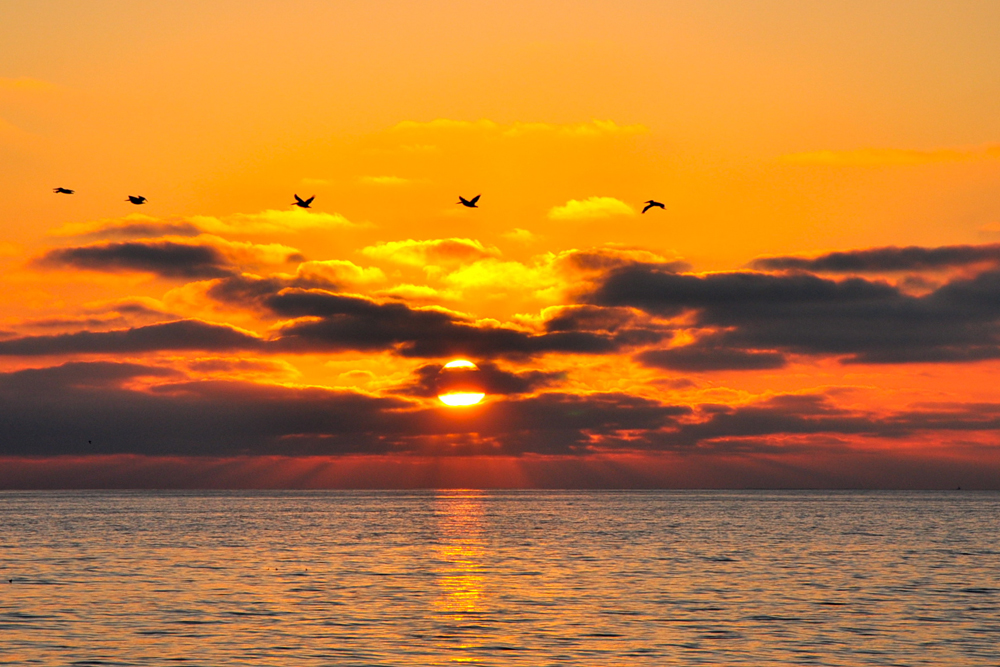
One of the timeless scenes for anyone lucky enough to be along the coastline of the Americas at sunset is of a flock of brown pelicans (Pelecanus occidentalis) winging their way toward their nighttime roost. Breeding pairs of brown pelicans are found along the coastline from California to Chile on the Pacific coast and from Maryland to Venezuela on the Atlantic coast. After breeding, groups of brown pelicans will move as far north as Canada.
One of eight
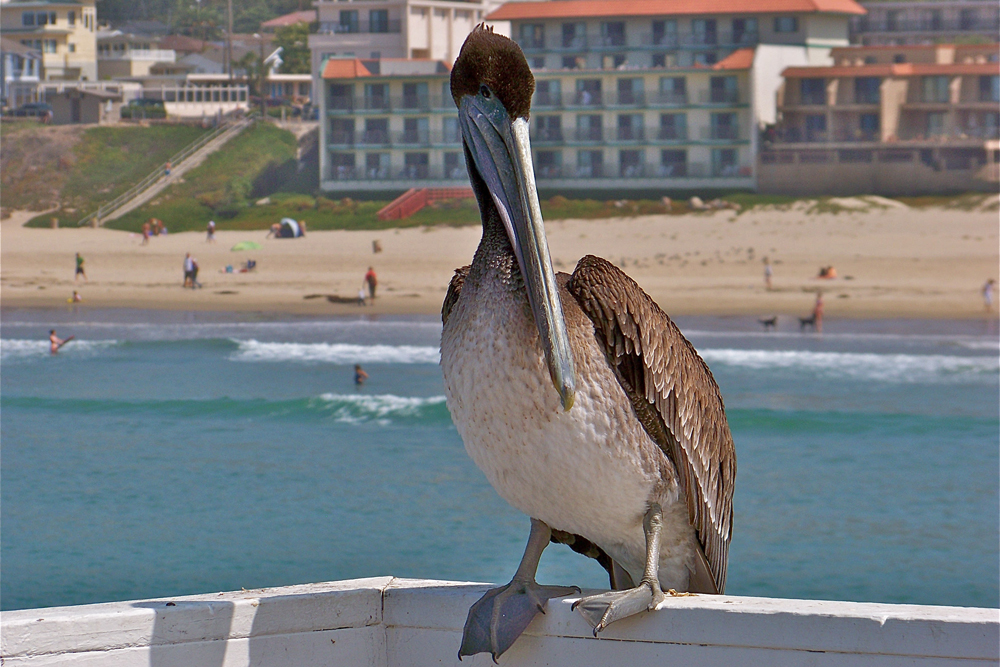
Brown pelicans are one of eight species of pelicans found in the world. They are the only species of pelicans that have a solely marine habitat. The birds live out their lives along the ocean shores, preferring the many saltwater estuaries and bays. Seldom does the brown pelican travel more than 20 miles (30 kilometers) from the coastline.
Small, but big
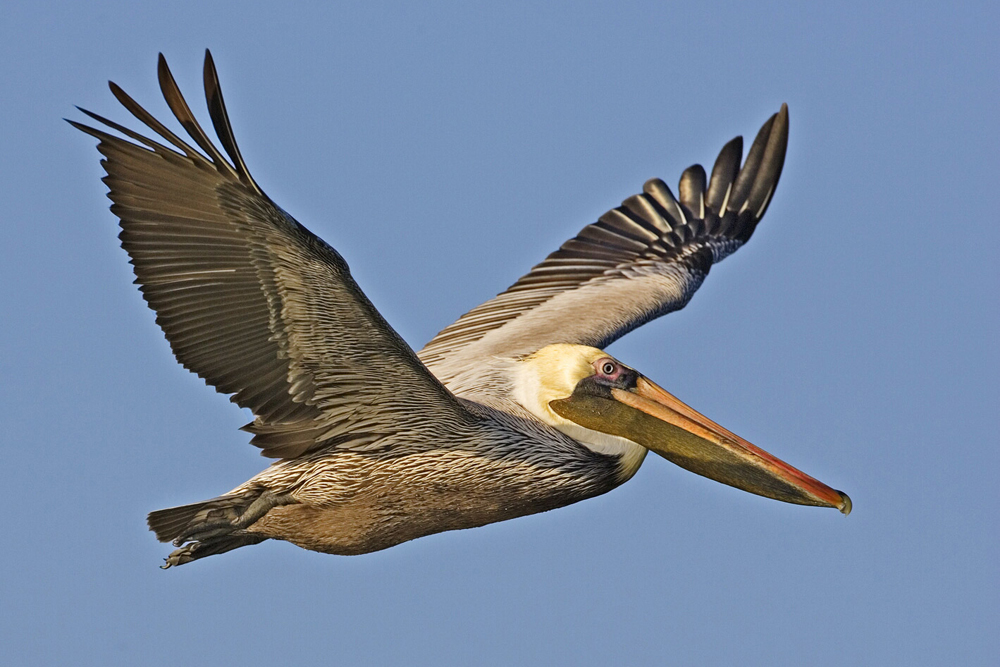
Brown pelicans are the smallest of the eight species of pelicans
Similar looks

There are six subspecies of brown pelicans and all have a similar appearance. All subspecies have short, dark legs with long brown wings. Their large, heavy bodies are covered with feathers in various shades of brown. The webbing between their four toes makes the brown pelican an ungainly walker but an outstanding swimmer.
Social butterflies

Brown pelicans are very social birds; they breed in large colonies and often fly and feed together. Their flight consists of heavy flapping followed by long periods of gliding, often just inches above the ocean surface. The pelicans can gain height above the water by riding the thermals that rise from the ocean and can fly at speeds up to 35 mph (56 km/h). They can be quite comical while landing and often need a surface for a short run when taking off.
Flocking together
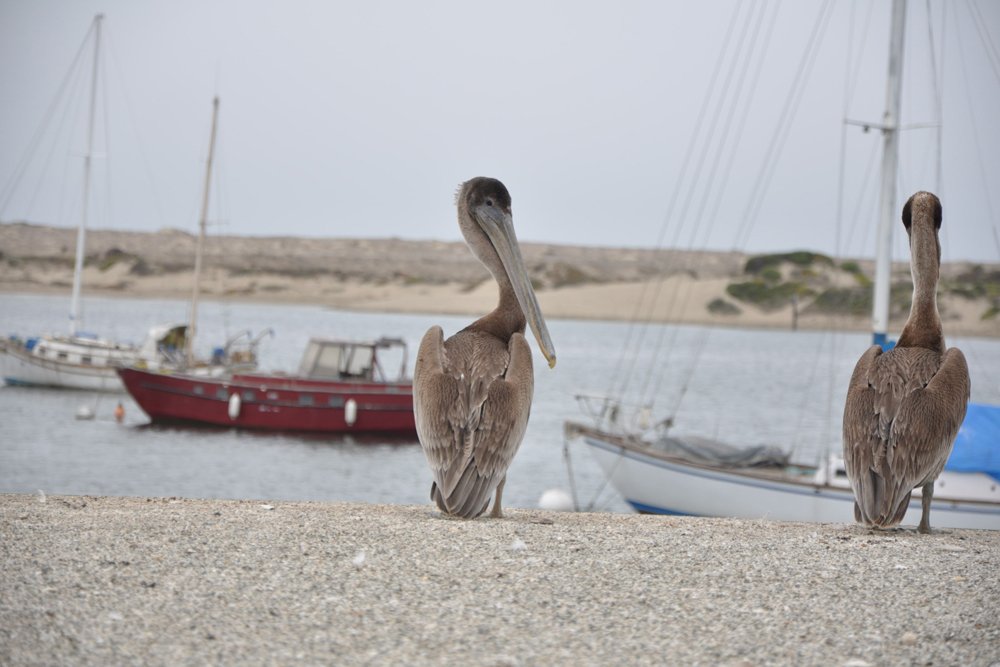
Brown pelicans live in flocks containing both male and female birds throughout the year. Male birds pick out a nesting site, then exhibit a variety of "advertizing displays" hoping to attract a female. The months of March and August are the prime nesting months.
Bigger eaters

Brown pelicans feed mainly on fish although they will eat an available amphibian or crustacean. They seem to prefer non-commercial fish species, such as pigfish, pinfish, mullet, silversides and sheepshead. A single adult bird can eat up to 5 pounds (2.3 kg) of fish each day.
Get the world’s most fascinating discoveries delivered straight to your inbox.
Interesting groups
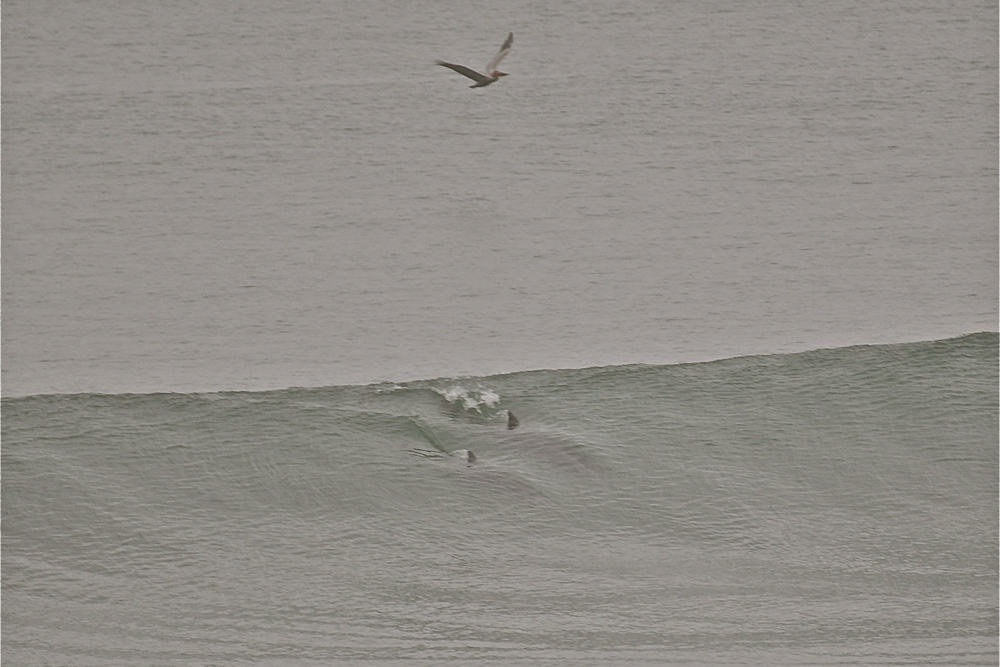
Sometimes their near-to-the-water flights bring the brown pelicans close to other marine animals, like the two bottlenose dolphins seen here and who seem to be doing a little surfing by catching a breaking wave. Because of their size and large powerful bills, adult brown pelicans appear to have few natural predators while fishing the ocean coastlines.
Savvy hunters
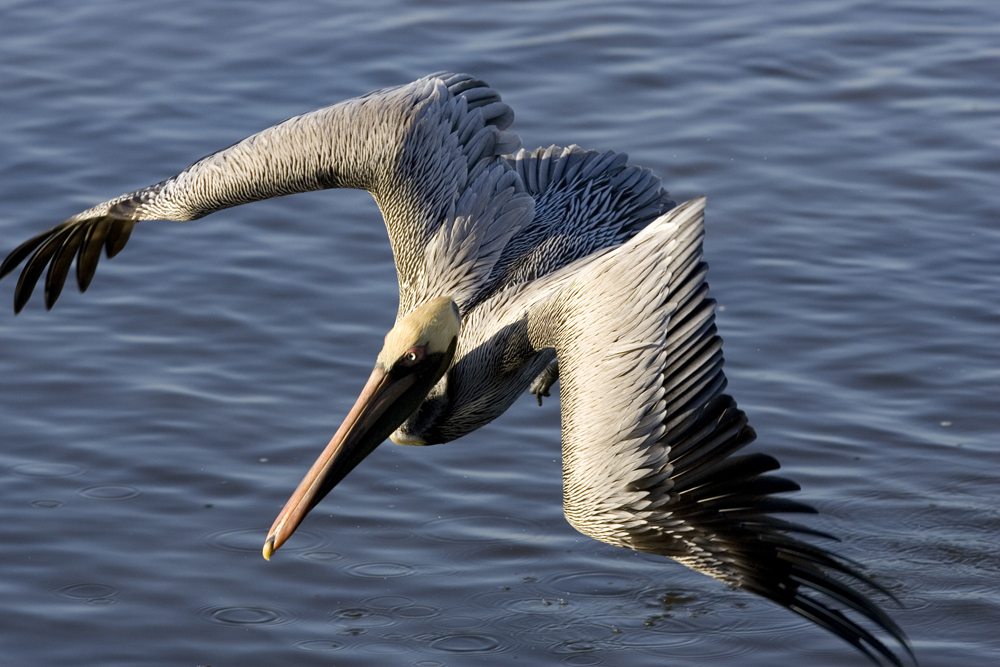
The brown pelican is a plunge diver, meaning it hunts its prey by diving into the water with its wings partially folded. These dives can begin at a height of 65 feet (20 m), and the downward speed reached during one of these dives will result in the pelican being totally submerged under the sea, snapping up nearby fish into its bill pouch. Upon return to the surface, seawater is purged from the bill pouch before any fish are swallowed. The brown pelican is the only species of pelican that fishes as a plunge diver.
Families

Brown pelicans prefer to nest in coastal islands that have no mammalian predators or permanent human habitats. Males will bring their consenting female reeds, sticks and grass and she weaves a nest on the ground, in a tree or in a bush. Two to three eggs soon fill the nest and both parents share the incubation of the eggs by placing their webbed feet over the eggs to keep them warm. Incubation of the eggs lasts about a month.
Danger looming

Brown pelican populations once were in great danger due to the use of the pesticide DDT that was too often found in the fish they consumed. This drop in population resulted in the brown pelican being placed on the U.S. Federal Endangered List in 1970. Fortunately, in 2009 the brown pelican was removed from the Endangered List because of its excellent population recovery. It is still protected under the Migratory Bird Treaty Act. Here a flock of brown pelicans share the beach with a group of seagulls.
 Live Science Plus
Live Science Plus





